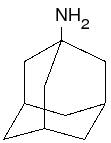Dear Dr. SerVaas:
In the Nov./Dec. issue of The Saturday Evening Post your advice for Mrs. Scheuemann's dizzy spells was the M.E.P. procedure. What is this procedure, step by step please?
Joe Aleman
El Paso, Texas
Many readers have asked how to perform the modified Epley procedure (MEP) to relieve a common type of dizziness called benign paroxysmal positional vertigo (BPPV).
The condition--which occurs when crystals, or ear rocks, break free and float within the inner ear canal--may affect either ear. The modified Epley procedure helps reposition the particles to restore equilibrium.
Dr. George Hicks, medical director of the Midwest Ear Institute in Indianapolis, reports that the painless non-surgical therapy is effective in 95 percent of patients. The following instructions are for BPPV of the posterior balance canal, the most common type of positional vertigo: For left ear BPPV:
* Begin by sitting on a bed with the head turned 45 degrees to the left. Place a pillow behind you so that on lying back, it will be under the shoulders.
* Lie back quickly with shoulders on the pillow and head reclined onto the bed. Wait for 30 seconds.
* Turn the head 90 degreees to the right without raising it and wait again for 30 seconds.
* Turn your body, head another 90 degrees to the right, and wait for another 30 seconds. Sit up on the right side.
For right ear BPPV, perform the motions in the opposite direction, starting with the head turned to the right side.
Most patients are cured by one office treatment at the time of diagnosis. Some experts say that home-based therapy is especially helpful for persistent or recurrent bouts of dizziness if properly diagnosed. In general, the maneuver is repeated three times daily until the person is free from positional vertigo for 24 hours. If vertigo persists, further investigation is advised.
Illustrated instructions for self-treatment are available online at www.charite.de/ch/neuro/vertigo.html. A demonstration may be viewed at www.neurology.org (click on "See videos on self-treatment of benign paroxysmal positional vertigo" and then click on "video 2").
Stay Away From the Flu: What You Can Do
Don't badger your doctor into prescribing an antibiotic until a culture or other tests show you need one. Antibiotics are powerless against flu and other viruses and may cause side effects.
Keep some generic amantadine (Symmetrel by Endo Labs) in your medicine cabinet to prevent and treat flu symptoms. A prescription is needed. At the first sign of the flu, doctors recommend taking two capsules of 200 milligrams twice a day for five to 10 days.
If you don't wear gloves, don't shake hands. Give friends a pat on the back rather than a handshake, embrace, or kiss. Use alcohol-based hand sanitizers such as Purell or Kimcare.
Be aware that doorknobs, telephones, and computer keyboards may harbor dangerous germs. Polish and sanitize your home and work areas as much as possible to protect your family.
COPYRIGHT 2005 Saturday Evening Post Society
COPYRIGHT 2005 Gale Group



